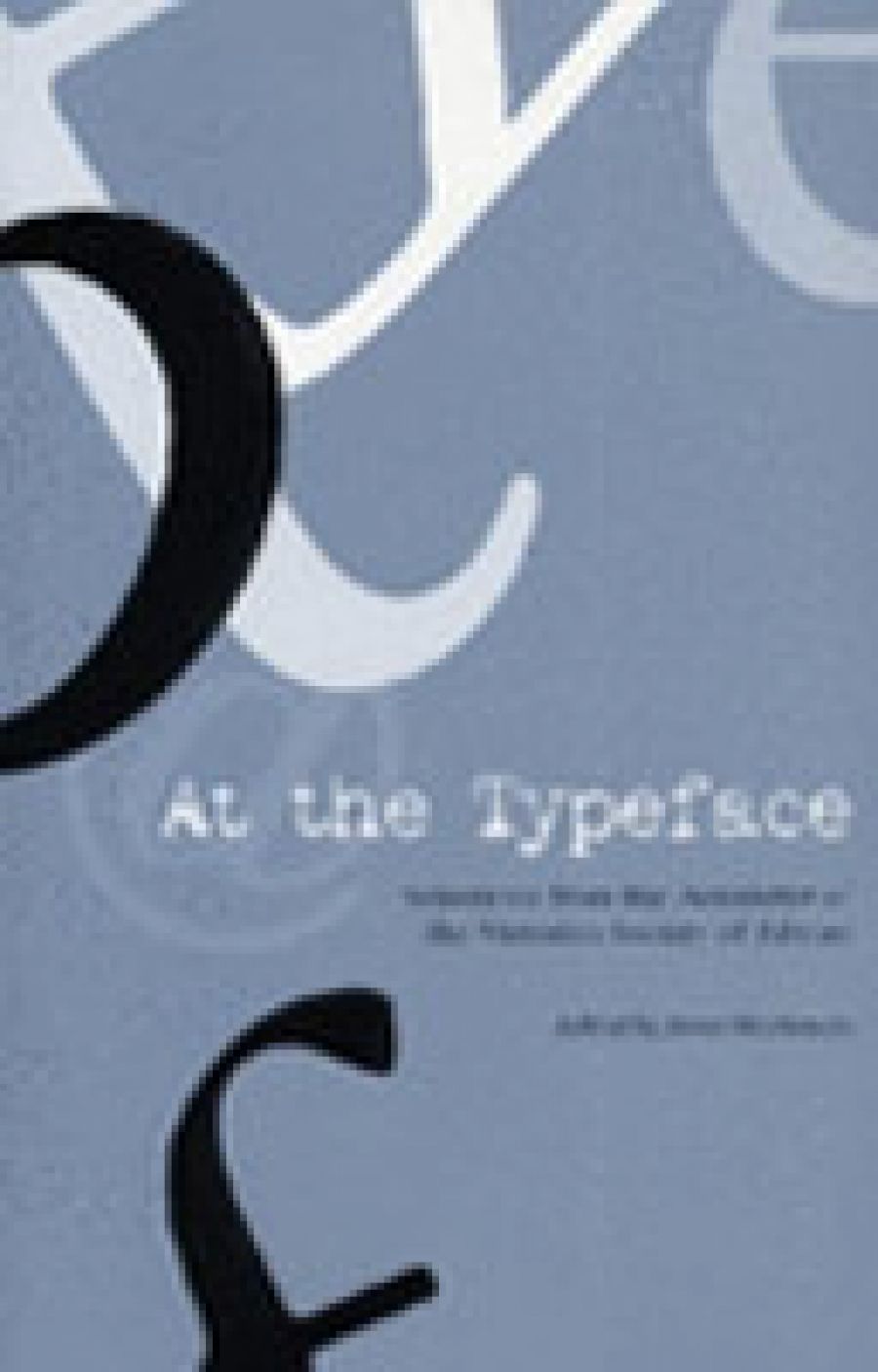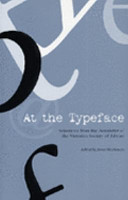
- Free Article: No
- Contents Category: Non-fiction
- Review Article: Yes
- Online Only: No
- Custom Highlight Text:
Sit down to read this book: it may give you a severe case of déjà vu. At the Typeface is an anthology of articles originally published in the Victorian Society of Editors’ newsletter between 1970 and early 2001 (since then the newsletters have been appearing online at www.socedvic.org). And, no surprises, the issues that trouble editors today have a long provenance: editors are underpaid and undervalued; marketing departments have more sway than editorial ones; publishers keep costs down by a reliance on freelancers; neophyte editors find it difficult to gain practical experience when there are few in-house positions.
- Book 1 Title: At the Typeface
- Book 1 Subtitle: Selections from the newsletter of the Victorian society of editors
- Book 1 Biblio: Society of Editors (Victoria) Inc., $30 pb, 356 pp
- Book 1 Cover Small (400 x 600):

- Book 1 Cover (800 x 1200):

The pieces are arranged by subject into twenty different chapters covering such areas as ‘The Role of the Editor’, ‘Authors on Editors’, ‘The Gender Agenda’ and ‘The Business of Publishing’. Within these you will find many of the past and present stars of the Victorian publishing and literary firmaments, including Helen Garner, Nick Hudson, Hilary McPhee, Robert Sessions, Brian Johns and Helen Daniel. However, and this is the biggest drawback of this collection, you won’t hear from these people directly. What the society’s newsletter usually included (except in a few cases) were not these people’s words but a report on their talk by someone at the meeting. For the reader, it’s a bit like being last in line in a game of Chinese whispers.
There is some useful information, much of it historical, on the publishing industry; some humour, including John Bangsund’s exegesis of Murphy’s Law (think Murphy’s Law for copy editors); and some insightful nuggets from writers and editors on their respective roles. Gerald Murnane, for example, considers the ideal editor as ‘a father, a mother, a carer and a psychiatrist’. Overall, however, this collection requires the reader to trawl through much paraphrased material to emerge with a few pearls.


Comments powered by CComment